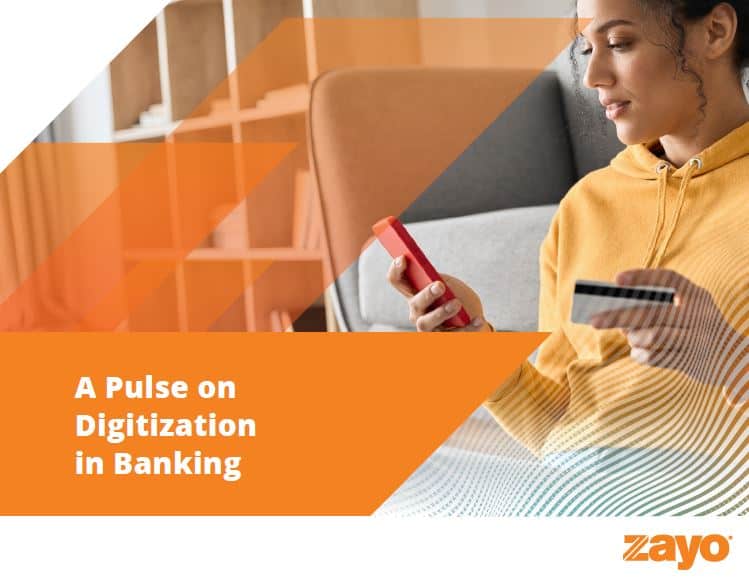We’ve reached the final part of our five-part series on digitization in banking. Throughout this series, we explore how blockchain and data analytics have created new opportunities and efficiencies in the banking industry. We’ve also discussed the impact of the latest generation to join the workforce, Gen Z, on the banking landscape. Most recently, we dissected how remote work and the Great Resignation have pushed banks to consider new digital technologies.
Now, we’ll look into how digitization impacts the customer experience overall. As the customer is the cornerstone of any good business, the customer experience is the driving force behind meaningful business change. In fact, 89% of companies compete primarily on the basis of customer experience (CX).
Let’s uncover how digitization drives better customer experiences.
Seamless omnichannel experiences
Delivering an optimal customer experience means doing so for every customer. That said, the way each customer banks could look very different. This means that banks must optimize both the branch and digital experience and ensure a seamless experience from one to the other.
For the 41% of banked customers in the U.S. that are digital-only, a good digital user experience is critical. Enhancing digital banking means optimizing not only online channels but mobile ones, as well. According to an Insider Intelligence survey, 89% of those surveyed use mobile banking, including 97% of millennials surveyed. Mobile banking channels provide greater access, online support, and financial alerts and notifications for things like bills and fraud detection.
On the other hand, although branch usage has dropped since the pandemic’s start, 29% of Americans would rather use their local retail bank branch than bank online. Still, bank branches today can lean on digital tools and offerings to optimize the in-person customer experience.
PNC is one bank embracing the value of the branch and leveraging technology to do so. While others in the industry do the opposite, PNC is actually opening branches in new markets. Aside from helping with everyday banking transactions and tasks, PNC trains customers on their digital banking tools at these physical locations.
Whether a customer banks in person or digitally, data should translate from one channel to the other seamlessly. That seamless data transfer depends heavily on the infrastructure a bank uses.

Cloud technology enables continuous data transfer from one channel to the next. This is because the cloud stores data in one centralized, virtualized location. This is something that legacy, on-premises data storage solutions fail to do effectively. This centralization enables employees from any location to access, analyze, and use customer data to ensure a better customer experience. Because banks still rely on dispersed locations to serve customers, cloud adoption is a crucial piece of any successful digital transformation strategy.
Because they often run from branch locations, banks are also increasingly turning to SD-WAN. This technology can more effectively connect locations, optimize bandwidth, increase network security, and share information across a dispersed network more efficiently than legacy networking technologies.
Automating what can be automated
Today’s customers expect fast, digital experiences from brands across industries. Similarly, employees wish to take the burden of highly manual tasks off their plates. That way, they can focus on delivering a better experience for customers. Automation technology is doing its part in ensuring fast, accurate processes for employees and customers, boosting the overall customer experience.
One obvious example of automation that has improved the customer experience greatly is AI chatbots. Chatbots work effectively in answering simple inquiries, supporting customers who prefer self-service, and reducing the load on contact centers. In fact, virtual customer assistants can reduce call, chat, and email inquiries by 70%. What’s more, 62% of customers would rather use a chatbot than wait for a human agent to respond. Bank of America’s chatbot Erica reported 100 million interactions in 2019 with 90% efficacy for useful answers.
Automation can also reduce the time customers and employees spend on onboarding processes and applications. Banks can reduce time spent on these processes drastically by replacing these previously manual, paper-based processes with electronic applications. Banks can use automation to pull critical customer information into these applications instantly.

Humanizing the digital experience
By using the vast reserves of customer data gathered from online and mobile banking, banks can create highly personalized experiences. Today’s consumer expects personal experiences in every industry, from retail to healthcare to banking. 72% of surveyed customers rank personalization as “highly important” in financial services.
Data analytics can enable banks to individualize offers and provide tailored financial plans, ultimately boosting customer loyalty. Personalization doesn’t just increase customer satisfaction – financial institutions that leverage personalization at scale realize a five to 15% growth in revenue.
Creating a more human customer experience with the help of digital technology also means offering financial advice and support remotely. For customers that prefer support from a human employee instead of a FAQ page or a chatbot, live chat and human support should be readily available.
Change is driven by the desire to deliver the best possible customer service. Large Financial Institutions are constantly evaluating and implementing technology to optimize the end user experience. With a combination of human and digital support, the customer has a choice on how to maximize their financial journey.
– Tony Gerace, SVP Financial & Professional Services, Zayo.
Humanizing digital banking services will mean different things for different generations of customers. For those less experienced with digital banking tools, banks should provide online and in-person education and tutorials. Offering financial advice on the website or on social media channels like TikTok can engage and retain younger customers.

Adopting a customer-first mindset
Overall, the customer must be top-of-mind when undergoing digital customer experience initiatives. This means considering customers at every stage of the customer journey and segment and considering their feedback.
To provide a truly customer-focused banking experience, banks must provide an outlet for customer feedback. Giving customers an opportunity to regularly share thoughts and suggestions for improvement is key to improving the customer experience. Banks can do so through social media, email communications, in-person surveys, or other channels. Customer experience optimization should be seen as a continuous process that always has room for improvement.
Using data, banks can consider customers at each stage of the customer journey and in every segment. From there, banks can create tailored experiences for each subset of customers. Customer relationship management (CRM) technology can aid in this by collecting customer data and allowing banks to create customer profiles. With these profiles, employees get an individual view of each customer. From there, they can provide better customer service with more focused customer interactions.
Finally, customers trust banks to keep their data and money safe. Banks should keep security in mind as they adopt more digital technologies and undergo customer experience efforts. Trust is the foundation of any good relationship – including that between banks and their customers.
In fact, half of the consumers surveyed by Morning Consult said they lost trust in a financial institution because of a bad customer service experience. Only 17% of those surveyed would return to a financial service provider after a breach of trust. If customers trust you with their wallets and their data, it’s imperative that you don’t break that trust.
